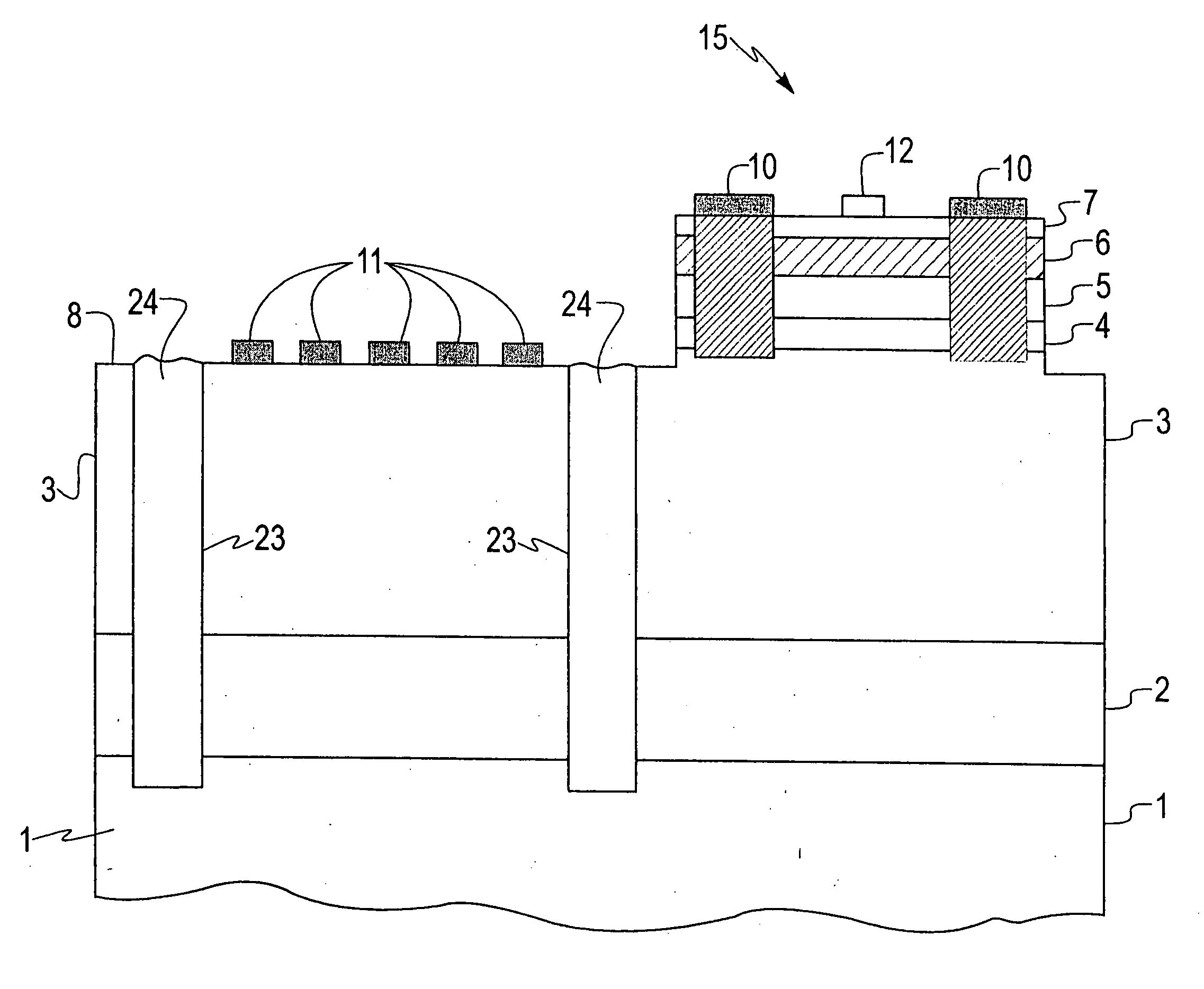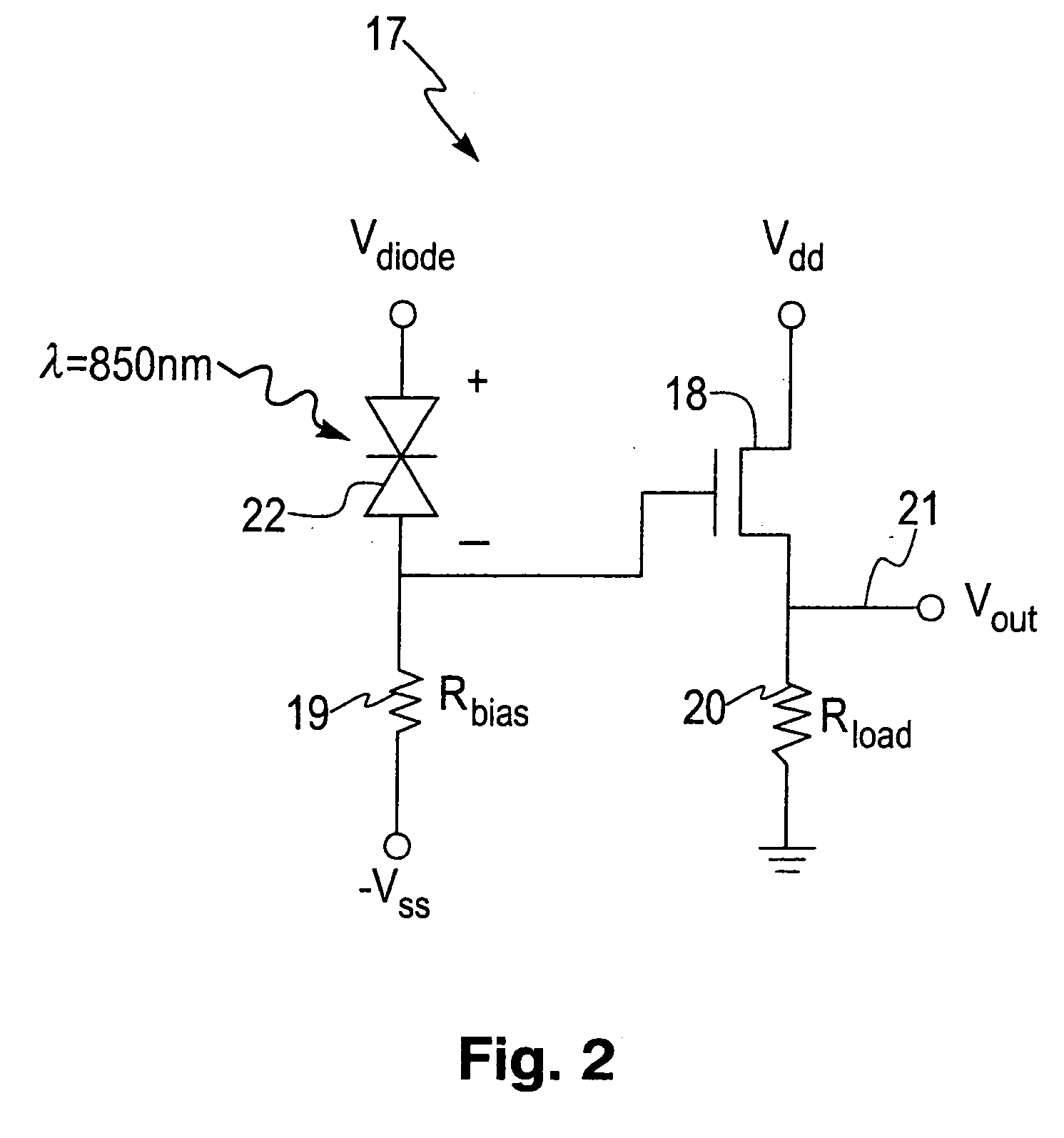Si/SiGe optoelectronic integrated circuits
- Summary
- Abstract
- Description
- Claims
- Application Information
AI Technical Summary
Benefits of technology
Problems solved by technology
Method used
Image
Examples
Embodiment Construction
[0034]FIGS. 1A-1E show the fabrication sequence for one embodiment of the invention where an n-channel, Si / SiGe modulation-doped field effect transistor (MODFET) 15 is integrated with a SiGe metal-semiconductor-metal (SM) photodetector. A typical layer structure is shown in FIG. 1A. The layers are epitaxially grown on a Si substrate 1 using a high-precision epitaxy technique such as molecular beam epitaxy, rapid thermal cheimcal vapor deposition, or ultra high vacuum chemical vapor deposition (UHV-CVD). Substrate 1 may also be SiGe, Ge, GaAs, SiC, SOS and SOI. Suitable adjustments will be required to accomodate a different substrate lattice constant compared to Si. The following description is directed to a Si substrate. For a description of how to grow epitaxial Si and Si1-xGex layers by UHV-CVD, reference is made to U.S. Pat. No. 5,298,452 which was issued on Mar. 29, 1994 to B. S. Meyerson which is incorporated herein by reference. For Si1-xGex layers, GeH4 is added to Si-contain...
PUM
 Login to View More
Login to View More Abstract
Description
Claims
Application Information
 Login to View More
Login to View More - R&D
- Intellectual Property
- Life Sciences
- Materials
- Tech Scout
- Unparalleled Data Quality
- Higher Quality Content
- 60% Fewer Hallucinations
Browse by: Latest US Patents, China's latest patents, Technical Efficacy Thesaurus, Application Domain, Technology Topic, Popular Technical Reports.
© 2025 PatSnap. All rights reserved.Legal|Privacy policy|Modern Slavery Act Transparency Statement|Sitemap|About US| Contact US: help@patsnap.com



